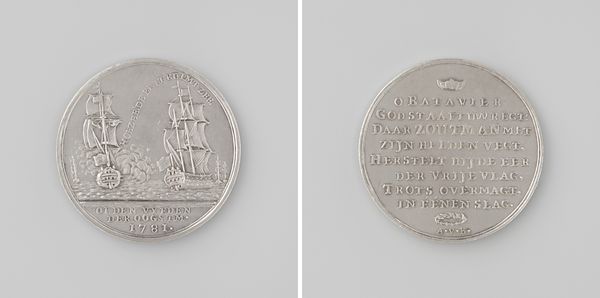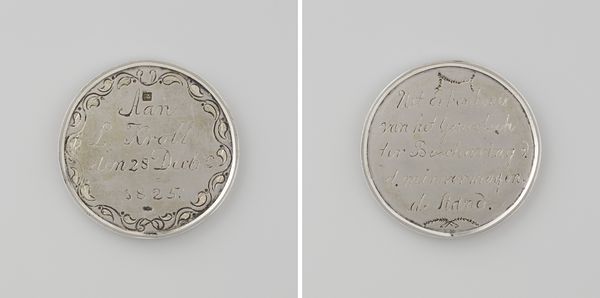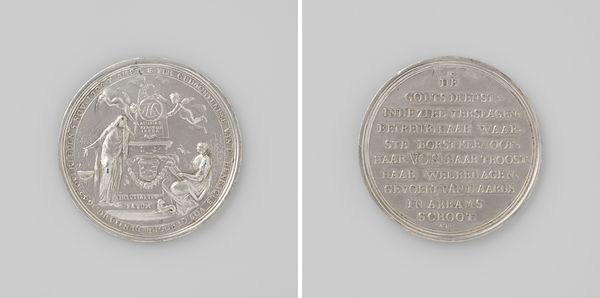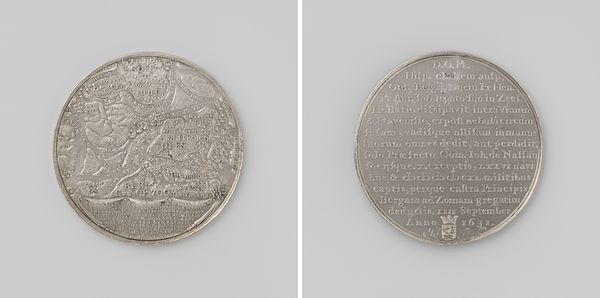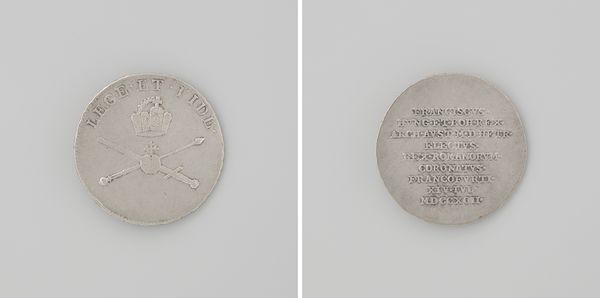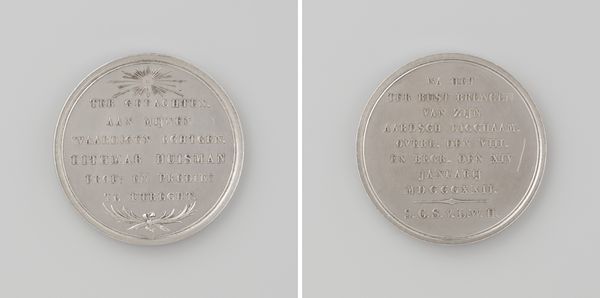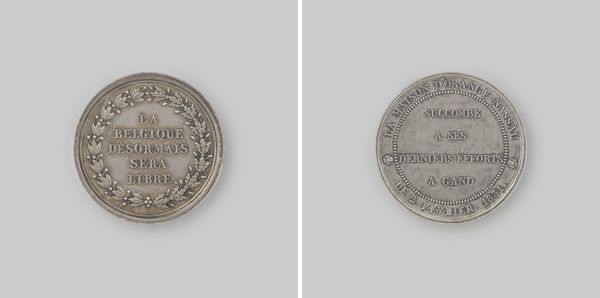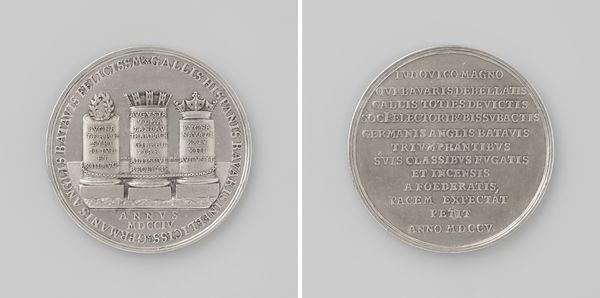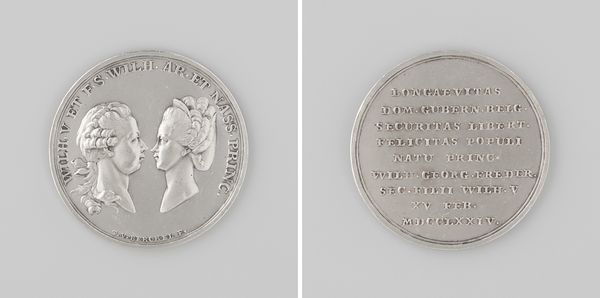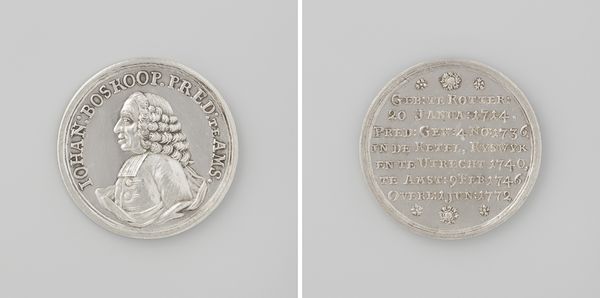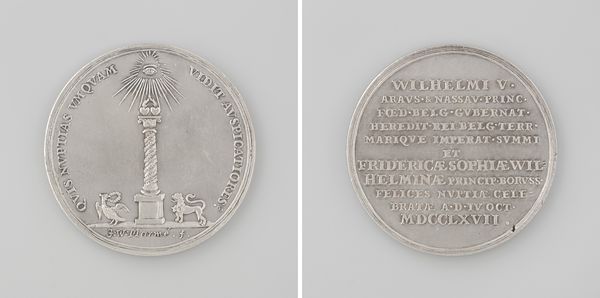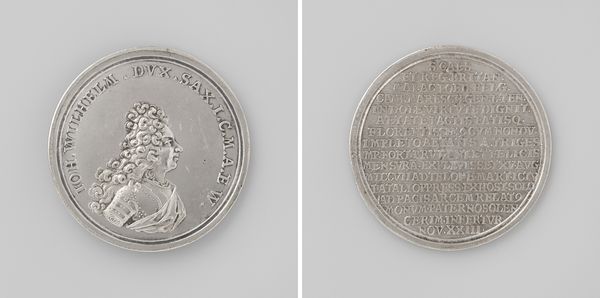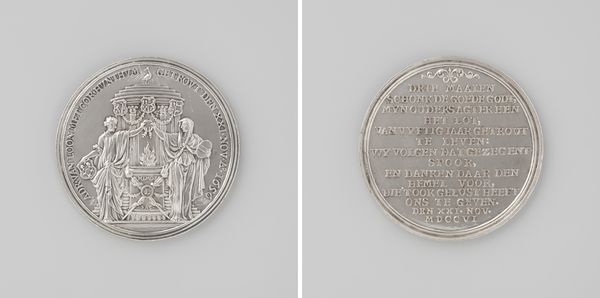
metal, sculpture
#
baroque
#
metal
#
sculpture
Dimensions: diameter 3.6 cm, weight 14.18 gr
Copyright: Rijks Museum: Open Domain
Curator: Looking at this metal sculpture by Nicolaas van Swinderen from 1751, "The Death of Samuel de la Douespe, Court Chaplain of William IV," I immediately think of currency, but then notice the inscription marking a life's end. Editor: Yes, it's like a somber coin, isn’t it? Polished metal glinting, but speaking of loss rather than wealth. The skull at the bottom… quite the memento mori. I wonder who Samuel de la Douespe was? Curator: He was William IV's court chaplain. The piece marks his death. On one side, you see dates—birth and death—framed within drapery and topped with an hourglass. It's a tangible representation of fleeting time. Editor: Absolutely! Time is so integral to commemorative iconography! I'm particularly drawn to the hourglass, and how its flanked with those wings. Not just time, but swift time, rushing away…it reinforces mortality's sudden arrival. It gives such a strange tone. I can almost imagine the chaplain himself commissioning this. "Remember me, but don't dwell, time flies!". Curator: Or perhaps it's meant to give comfort, a message to those left behind: life might be fleeting, but there's still value in the moment, even at the end. On the flip side, it simply states his role and tenure: "Pastor Leov, seventeen years," plain, like a final resume. Editor: "A final resume"—I like that! Simple, authoritative. Maybe less about comforting those who mourn and more about marking that man's footprint on his world. The bird figure near the inscription almost feels like an aspiration that exceeds all else. A hope, a soul released… Curator: It also might show how someone wished to be perceived—not as fragile, but eternal in faith. The artist truly manages to encapsulate a life, and distill all the most significant moments of his professional career, in such a small token. It's more than just remembering a death; it's acknowledging a life lived. Editor: Precisely! Each emblem—the hourglass, skull, winged time—functions as more than just decorum. Together, they offer not simply a summary of one single existence, but a lens for grasping broader existential realities about life, death, aspiration, remembrance and even accomplishment.
Comments
No comments
Be the first to comment and join the conversation on the ultimate creative platform.
